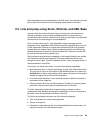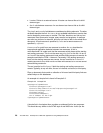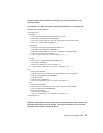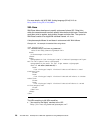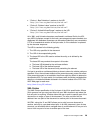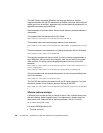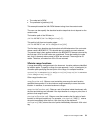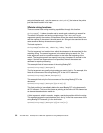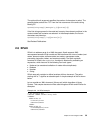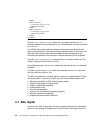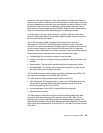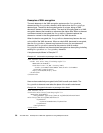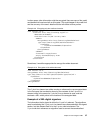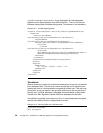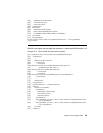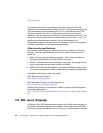
Chapter 2. Technologies in XML 33
The optional fourth argument specifies the number of characters to select. The
example below, selects the ‘737’ from the first occurrence of the entire string
Boeing737:
xpointer(string-range(/,"Boeing737",7,3)[position()=1])
If the first string argument in the node test is empty, then relevant positions in the
context node's text contents are selected. In the example below, the first six
characters are picked up:
xpointer(string-range(/,""1,6)[position()=1])
See Related Publications.
2.6 XPath
XPath is to address parts of an XML document. Xpath supports XML
namespaces because XPath models an XML document as a tree of nodes (root
nodes, element nodes, attribute nodes, text nodes, namespace nodes,
processing instruction nodes, and comment nodes). The basic syntactic
construct in XPath is the
expression. An object is obtained by evaluating an
expression, which has one of the following four basic types:
Node-set (an unordered collection of nodes without duplicates)
Boolean
Number
String
XPath uses path notation to define locations within a document. The paths
starting with a “/” signifies an absolute path. A simple example of this is shown
below.
Let us consider an XML document (Library.xml) which describes a Library
System. This sample document will be used throughout XPath and XPointer for
examples.
Example 2-6 An XPath example
<? xml version=”1.0”?>
<!DOCTYPE LIBRARY SYSTEM “library.dtd”>
<LIBRARY>
<BOOK ID=”B1.1”>
<TITLE>xml</TITLE>
<COPIES>5</COPIES>
</BOOK>
<BOOK ID=”B2.1”>
<TITLE>WebSphere</TITLE>
<COPIES>10</COPIES>



